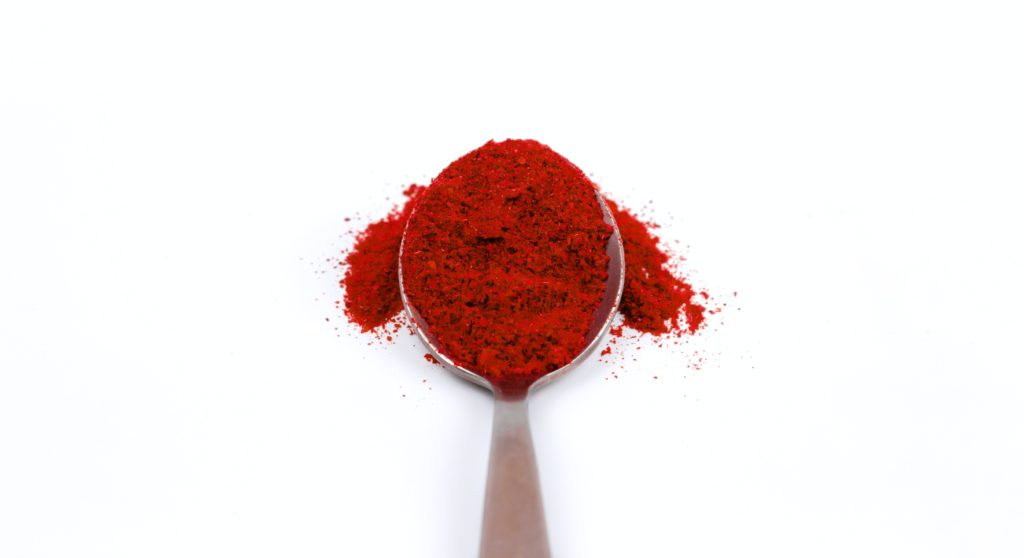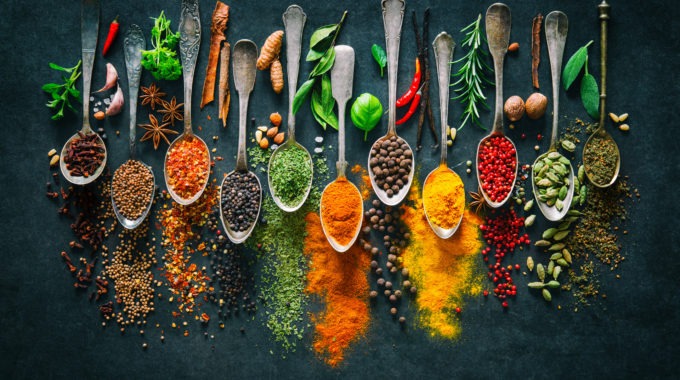Stuff you never knew about spices
One of Australia’s foremost culinary herb and spice experts, Ian Hemphill shares his encyclopaedic herb and spice knowledge with EATIVITY. Read on to discover the answers to some spicy questions, such as: should you always roast your spices? What’s really in my supermarket spice blend? And what the hell is Ras el Hanout, anyway?
Hemphill, or “Herbie” as he’s affectionately know, spent his childhood surrounded by herbs and spices. His parents, John and Rosemary Hemphill, were pioneering the Australian herb and spice scene in the 1950s.
Forty years of working in the industry – including lecturing, industrial brokering, manufacturing and marketing – has made Hemphill a well-respected and popular figure among his peers, both here in Australia and overseas. He now shares his extensive experience and knowledge with his customers at Herbie’s Spices, on NSW’s Central Coast.

The perils of popularity
There can be downsides to popularity. Ask any teenaged high-schooler. When it comes to consumer goods, our throwaway lifestyle is a good example – cheap “fast fashion” clothing manufactured to be worn a few times before being cast aside, for instance.
But when it comes to herbs and spices, Hemphill says it’s about the “race to the bottom”.
“One of the oldest problems for the spice trade is adulteration,” he says. “What’s happening in this race to the bottom, it’s all driven by cost. For example, you’ve got the big supermarket chains who are always wanting a cheaper price. And so the people who are providing those spices go to the traders and tell them it’s too expensive; it’s got to be cheaper. So then what happens is the trader will just adulterate it a little bit.”
This basically means adding something else to the mix. Food fraud, if you will. A good example is an investigation by Choice which found that, of 12 sampled brands of oregano, only five contained 100 percent oregano. One contained only 10 percent oregano.
“With growing popularity and wide-spread distribution there are more people wanting to get into the business,” Hemphill says. “But often they don’t have a depth of understanding – they think all they have to do is buy stuff and repack it in a lovely bottle and away you go.
“But what they’re often doing is giving consumers something that’s really not true to type. It’s not the way it should be.”

Misinformed, missing out
Another drawback to popularity: misinformation starts to spread. Some examples of spice-related misinformation include the misconception that sumac is the ground seeds of the sumac berry, when in fact it’s the ground skin of the berry, not the seed.
“Also, many people confuse cinnamon and cassia,” Hemphill says. “There’s the Sri Lankan cinnamon, which is mild and sweet and there’s the Asian cassia, which is a lot stronger and has a very different flavour profile.”
When it comes to using spices, many cooks mistakenly advise that you must always roast your spices before using them. While this is true in some cases – such as when making a rich beef curry – it’s not always necessary… or even advisable.
“If you’re making, say, a Moroccan chicken tagine, or you’re spicing couscous with a blend like Ras el Hanout [a Moroccan blend of over 20 spices], you would never roast that. Because what you’re after are the light, delicate flavour notes that are in those spices.”
Finally, a big misconception is that all spices are hot. Definitely not the case, says Hemphill.
“People say, ‘Oh, I don’t like spicy food, I can’t eat spicy food’. But of course, they can eat cinnamon and vanilla, and they’re spices,” he wisely points out. “Yes, chilli and pepper are hot, but there are lots of spices about that have all sorts of beautiful flavours.”

Around the blend
Next time you’re at the supermarket, take a moment to check out the sheer volume of cheap “spice blends”. These are something that really bugs Hemphill.
“So many of them are full of artificial ingredients!” he says. “We’re always saying to people: read the label, because they use all these fillers. Some of the spice blends I’ve surveyed hardly had any spice in them at all, yet you’ve got these products sitting in a spice aisle.”
As well as fillers such as artificial colours and flavours, many also contain high levels of salt. Again, it comes down to price: according to Hemphill, if you’re making a blend, herbs and spices could cost you anywhere between $10, $20, or even up to $80 a kilo. Salt costs around 20 cents per kilo. I think we can all see where this is going…
“Essentially, what I say in my paper is that we need more education,” Hemphill says. And not just for consumers. “Would you believe none of the commercial cookery courses have a unit dedicated to herbs and spices? Yet these are things that chefs are using every day!”

Herbie’s advice
In order to not become a casualty in that race to the bottom, try not to use price as your final decision-maker when it comes to buying herbs and spices.
“Keep in mind that when you use a spice in cooking, you’re maybe using a few teaspoons of spice with maybe 500 grams or more of other ingredients that you’ve paid quite a lot for,” Hemphill says. “So, the value of the spice that actually goes into each recipe is actually low – even if it’s something as expensive at saffron.”
But the best advice? Hemphill recommends that you take the time to get to know your favourite spices, because once you know what’s good, you’ll also begin to know what isn’t.
“When you next use a spice, even if it’s one you think you’re familiar with, have a good look at it,” he says. “Look at the colour, then have a good smell of it. Because people forget that the human sense of smell is the most powerful sense you’ve got. And when you smell things, you develop a smell memory. If people are doing that every time they use their spice – just have a little sniff – they’ll notice if the paprika they’ve purchased is really a Hungarian paprika, or if it has a slightly harsh, bitter note – if it’s a lower grade.
“The more you look at your spice, the more you smell it every time you use it, you really start to understand – you develop your own sense.”









